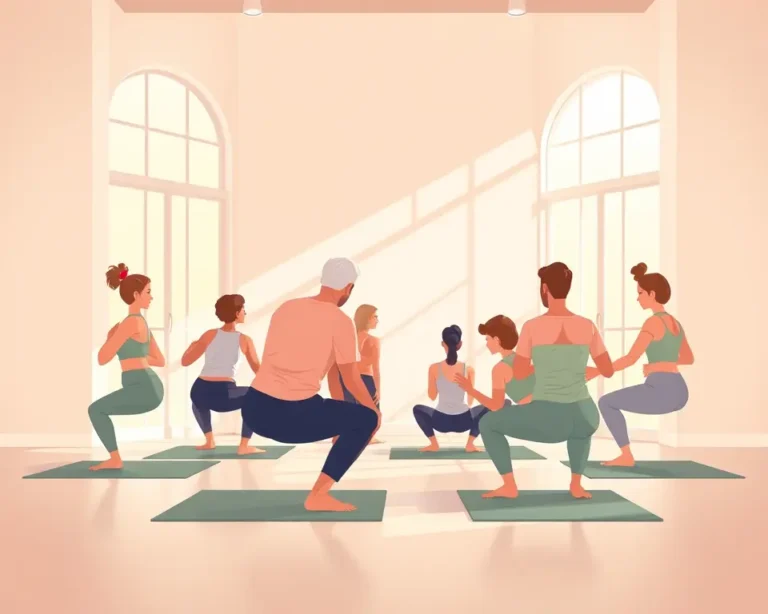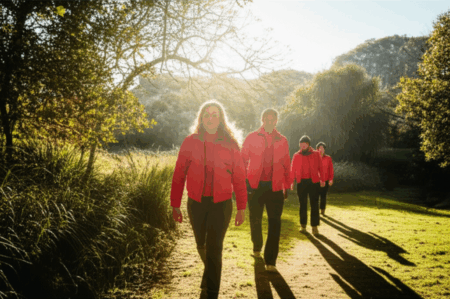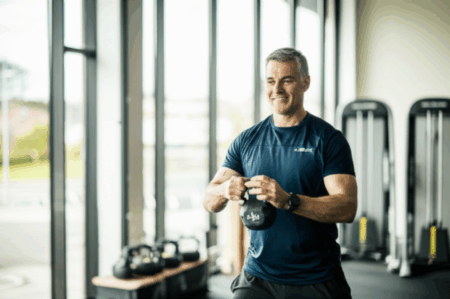A mobility coach is advocating a return to foundational movements, specifically the way babies squat, to enhance lower body flexibility and improve hip health. This “squat like a baby” routine focuses on regaining natural movement patterns often lost due to sedentary lifestyles and limited ranges of motion.
Understanding the “Baby Squat” and Its Benefits
The “baby squat,” or deep squat, refers to the way infants naturally squat with their feet flat on the ground, knees wide apart, and torso upright. This position offers numerous benefits:
- Improved Hip Mobility: The deep squat position encourages a full range of motion in the hips, promoting flexibility and reducing stiffness.
- Enhanced Ankle Flexibility: Maintaining flat feet in a deep squat requires adequate ankle flexibility, which is crucial for various movements and activities.
- Increased Lower Body Strength: Holding a deep squat engages various lower body muscles, including the glutes, quads, and hamstrings, contributing to increased strength and stability.
- Improved Posture: The upright torso position in a deep squat promotes better spinal alignment and posture.
- Better Balance and Coordination: Practicing deep squats can improve balance and coordination by strengthening stabilizing muscles.
The Mobility Coach’s Routine: A Step-by-Step Guide
The mobility coach’s “squat like a baby” routine typically involves a series of exercises designed to gradually improve your ability to perform a deep squat with proper form. These may include:
Warm-up Exercises
- Hip Circles: Stand with your feet shoulder-width apart and gently rotate your hips in a circular motion, both clockwise and counterclockwise, to loosen the hip joints.
- Leg Swings: Swing one leg forward and backward, then side to side, to increase blood flow and flexibility in the hips and hamstrings.
- Ankle Mobility Drills: Perform ankle rotations, calf raises, and toe raises to improve ankle flexibility and range of motion.
Progressive Squatting Exercises
- Assisted Squats: Hold onto a stable object, such as a chair or pole, and squat down as deep as you comfortably can while maintaining good form.
- Goblet Squats: Hold a dumbbell or kettlebell close to your chest and perform squats, focusing on maintaining an upright torso and pushing your knees out.
- Box Squats: Squat down onto a box or bench, ensuring your thighs are parallel to the ground, before standing back up. This helps develop proper squat depth and control.
- Deep Squat Holds: Lower yourself into a deep squat position and hold it for a specified duration, gradually increasing the hold time as your flexibility improves.
- Third World Squat (Resting Squat): Work towards comfortably holding a deep squat with your feet flat on the ground. This can be used as a resting position and a way to maintain hip and ankle mobility.
Cool-down Stretches
- Pigeon Pose: A yoga pose that stretches the hips and glutes.
- Butterfly Stretch: Sit with the soles of your feet together and gently press your knees towards the ground to stretch the inner thighs and groin.
- Standing Hamstring Stretch: Stand with one leg slightly forward and gently bend forward, keeping your back straight, to stretch the hamstrings.
Tips for Performing the “Squat Like a Baby” Routine Safely and Effectively
- Start Slowly: If you’re new to deep squats, begin with assisted squats or box squats and gradually progress as your flexibility and strength improve.
- Maintain Good Form: Focus on maintaining a straight back, pushing your knees out, and keeping your feet flat on the ground throughout the squat.
- Listen to Your Body: Stop if you experience any pain or discomfort.
- Be Consistent: Incorporate the “squat like a baby” routine into your regular exercise program for optimal results.
- Consult a Professional: If you have any underlying health conditions or concerns, consult a physical therapist or qualified healthcare professional before starting a new exercise program.
Addressing Common Challenges in Achieving a Deep Squat
Many adults struggle to achieve a deep squat due to various factors, including:
- Tight Muscles: Tightness in the hips, hamstrings, calves, and ankles can limit squat depth.
- Weak Stabilizing Muscles: Weakness in the glutes, core, and other stabilizing muscles can make it difficult to maintain proper form and balance in a deep squat.
- Poor Posture: Rounded shoulders and a forward head posture can affect spinal alignment and limit squat depth.
- Lack of Practice: Sedentary lifestyles and a lack of regular squatting can lead to a loss of flexibility and strength required for deep squats.
Solutions for Overcoming Challenges
- Targeted Stretching: Focus on stretching tight muscles, such as the hip flexors, hamstrings, and calves, to improve flexibility.
- Strengthening Exercises: Incorporate exercises that strengthen the glutes, core, and other stabilizing muscles to improve stability and control.
- Postural Correction: Practice exercises that improve posture, such as chest openers and back extensions, to align the spine and improve squat depth.
- Gradual Progression: Start with easier variations of squats and gradually progress to deeper squats as your flexibility and strength improve.
The Importance of Hip Health for Overall Well-being
Hip health is crucial for overall well-being and functional movement. Healthy hips allow for a full range of motion, support proper posture, and contribute to balance and stability. Poor hip health can lead to various problems, including:
- Pain and Stiffness: Hip pain and stiffness can limit mobility and affect daily activities.
- Muscle Imbalances: Tight or weak hip muscles can lead to muscle imbalances and compensatory movement patterns.
- Increased Risk of Injury: Poor hip health can increase the risk of injuries to the hips, knees, and lower back.
- Reduced Athletic Performance: Limited hip mobility and strength can hinder athletic performance and increase the risk of sports-related injuries.
Expert Opinion on the “Squat Like a Baby” Routine
Physical therapists and fitness experts generally agree that the “squat like a baby” routine can be beneficial for improving lower body flexibility, hip health, and overall functional movement. However, they emphasize the importance of proper form and gradual progression to avoid injuries.
- Physical Therapist Perspective: A physical therapist might emphasize the importance of assessing individual needs and addressing any underlying muscle imbalances or joint restrictions before starting the routine.
- Fitness Expert Perspective: A fitness expert might focus on the role of deep squats in building lower body strength, improving athletic performance, and enhancing overall fitness.
Potential Risks and Considerations
While the “squat like a baby” routine can be beneficial, it’s essential to be aware of potential risks and considerations:
- Pre-existing Conditions: Individuals with pre-existing hip, knee, or back problems should consult a healthcare professional before starting the routine.
- Improper Form: Performing deep squats with improper form can increase the risk of injuries.
- Overtraining: Overtraining can lead to muscle soreness, fatigue, and an increased risk of injuries.
- Individual Variability: Flexibility and strength levels vary among individuals, so it’s essential to adjust the routine accordingly.
The Role of Lifestyle Factors in Maintaining Hip Health
In addition to exercise, various lifestyle factors play a role in maintaining hip health:
- Regular Physical Activity: Engaging in regular physical activity, including walking, running, and swimming, can help maintain hip mobility and strength.
- Healthy Diet: A healthy diet rich in nutrients, such as calcium, vitamin D, and omega-3 fatty acids, can support bone health and reduce inflammation.
- Proper Posture: Maintaining proper posture while sitting, standing, and lifting can help prevent hip pain and stiffness.
- Weight Management: Maintaining a healthy weight can reduce stress on the hips and prevent joint problems.
- Avoid Prolonged Sitting: Prolonged sitting can lead to hip tightness and stiffness, so it’s essential to take breaks and move around regularly.
- Proper Footwear: Wearing supportive footwear can help maintain proper alignment and reduce stress on the hips and lower body.
Conclusion: Reclaiming Natural Movement for Better Hip Health
The “squat like a baby” routine offers a simple yet effective way to improve lower body flexibility, hip health, and overall functional movement. By gradually progressing through the exercises and paying attention to proper form, individuals can reclaim natural movement patterns and experience the numerous benefits of a deep squat. Remember to listen to your body, consult a professional if needed, and incorporate healthy lifestyle habits to support long-term hip health.







